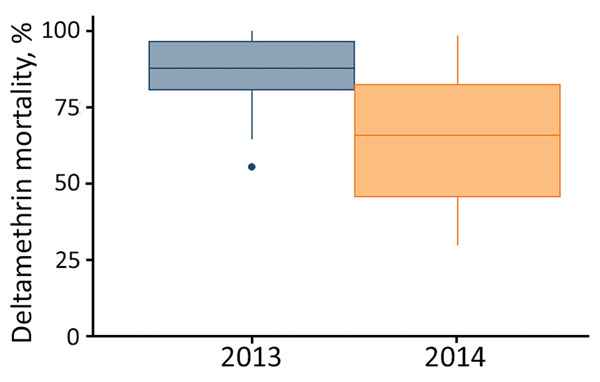Volume 23, Number 5—May 2017
Research
Insecticide-Treated Nets and Protection against Insecticide-Resistant Malaria Vectors in Western Kenya
Figure 2

Figure 2. Anopheles gambiae sensu lato mosquito mortality to deltamethrin, western Kenya, 2013 and 2014. Mortality was measured using the World Health Organization tube bioassay. Whiskers indicate full range of data; top and bottom lines of boxes indicate 25%–75% interquartile ranges; horizontal lines within boxes indicate medians.
1These authors contributed equally to this article.
Page created: April 14, 2017
Page updated: April 14, 2017
Page reviewed: April 14, 2017
The conclusions, findings, and opinions expressed by authors contributing to this journal do not necessarily reflect the official position of the U.S. Department of Health and Human Services, the Public Health Service, the Centers for Disease Control and Prevention, or the authors' affiliated institutions. Use of trade names is for identification only and does not imply endorsement by any of the groups named above.